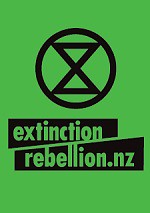Minister of Conservation Tim Groser ignored official advice and instead bowed to demands from the Minister of Energy when he decided to alter the proposed boundaries of the Oteake Conservation Park to exclude a lignite deposit.
The boundaries for the new park were announced by the Minister in April, and excluded a 195 hectare area over the Hawkdun lignite deposit, described as "a significant resource of recoverable energy". But papers released under the Official Information Act show that the previous Minister, Steve Chadwick, had been advised to include the area in the park [PDF], and had agreed to do so. However, the gazetting of park boundaries - originally scheduled for Conservation week on 11 or 12 September 2008 - was delayed by the announcement of the election date. Following the election, the new Minister put the formal setting of park boundaries on hold following a letter from the Minister of Energy [PDF]. He then ignored advice from the Otago Conservator on the value of the area to the park as a whole and instead decided to exclude it [PDF] in order to remove
a significant barrier to investment and development [due to] increased access uncertainty.According to advice from the Otago Conservator [PDF], the Hawkdun lignite deposit "is one of ten in Otago-Southland that could help meet the country's energy needs in the future". It noted that the boundaries had already been agreed by the previous Minister after consultation [PDF] with the previous Minister of Energy [PDF], who had agreed with the decision as
the Hawkdun deposit straddles the main stem of the Manuherikia River, and so has environmental constraints that may be more pressing than for other lignite deposits.The core of the advice stressed the value of the area to the park and to the New Zealand conservation estate:
The upper Manuherikia valley is one of the few places where Oteake park can include basin floor or "lowland" components. Including such components enables parks to better protect and represent the full range of high country environments, ecosystems and landscapes, and offer a wider range of recreational opportunities. To agree to the Crown Minerals / L&M Mining request would have removed from the park one or both of the two substantial areas that extend onto the basin floor. Therefore, although the Crown Minerals and L&M Mining submissions are only asking for a tiny fraction of the total conservation land proposed for the park (65,000 hectares) to be excluded, they are critically important areas. Undeveloped basin floor to range crest sequences and landscapes are now rare in the South Island high country, and opportunities to include them in parks are rarer still. This is one of the few such remaining opportunities.The Conservator also highlighted the area's current recreational (it was the site of a DOC campground and the locus for a network of 4WD and mountain bike trails), ecological (it provides habitat for the endangered black-fronted tern and other birds), and archaeological (a Maori quarry) value. But in the eyes of the present government, all of that apparently comes second to the possibility of turning it into an open-cast mine for an environmentally unsustainable fuel which is quite literally killing the planet.





